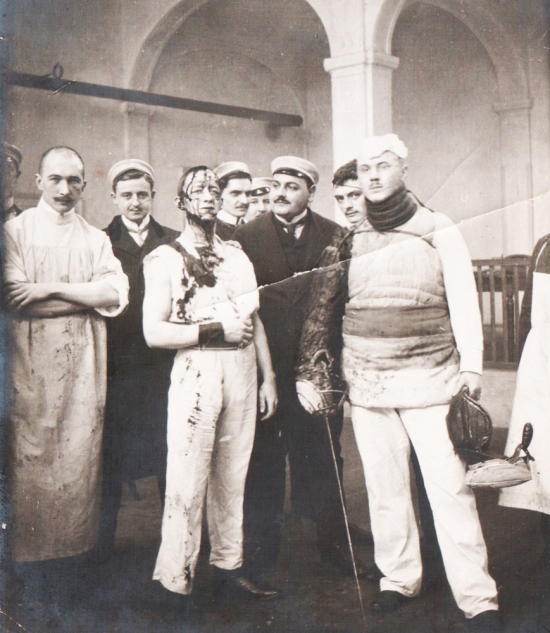
Two opponents after the Mensur, and the doctor ready to suture the wounds without the use of anaesthetic, as prescribed by the ritual (Germany, 1905 – Nautilus Collection).
The Mensur was a ritual sword duel practised among some German student fraternities, regulated from the XVII century, that reached its peak at the beginning of the XIX century. The opponents, at a certain distance (“mensur” comes from the Latin word mensura, measure) from each other, had to prove their bravery in the face of danger and the winner was the one who ended the duel with the most beautiful wound. The showy scar that often remained visible on the cheek (the most-wanted Schmiss) should indeed be a neat cut, proving that the dueller had not stepped back from the blow, showing his nerve and the ability to endure pain. In the German society of the time, a scar on the face was a sign of social status and constituted the most effective reference for a successful military career.
